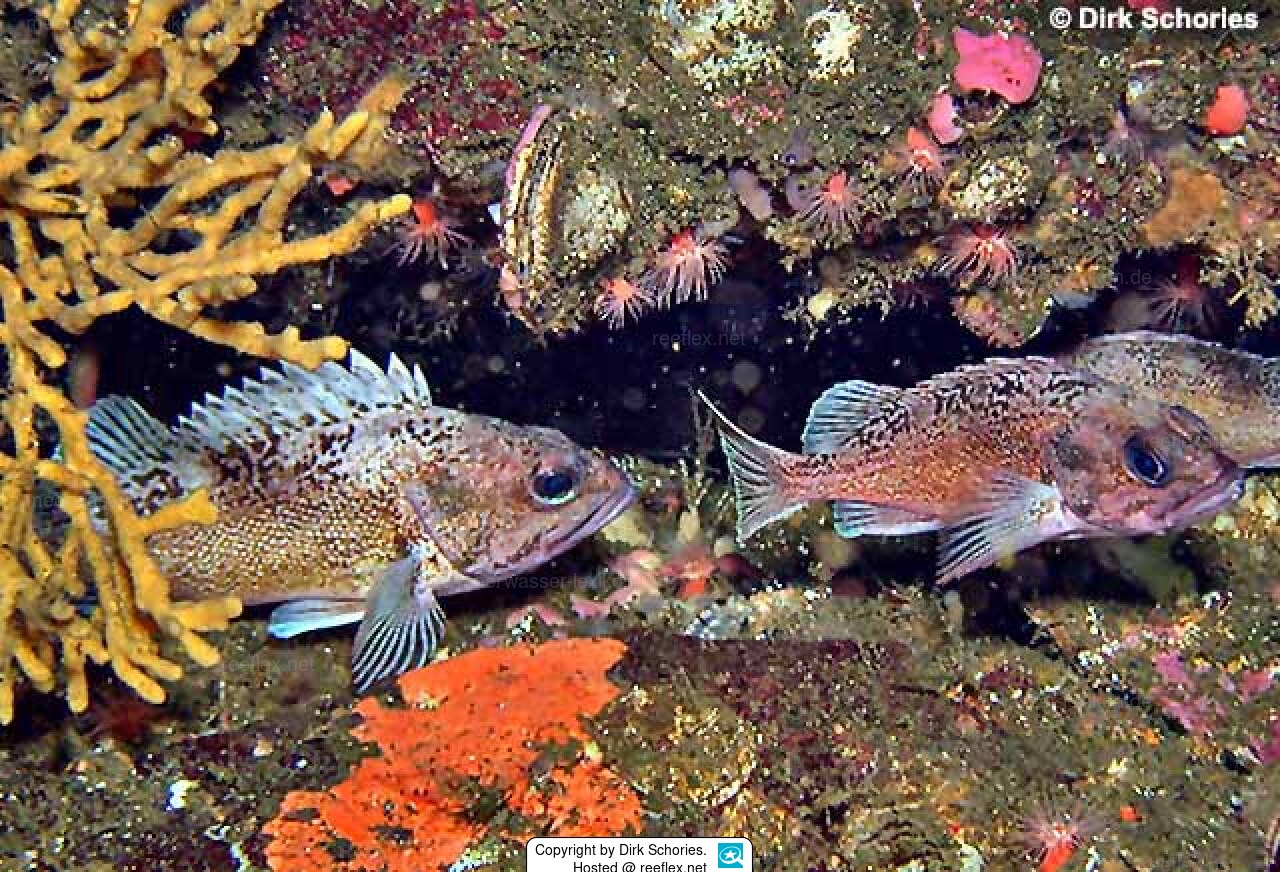Info
The European Commission's trade name for the commercially fished spiny dogfish is redfish, although the redfish we know is actually Sebastes marinus.
Despite intensive fishing, there is a variety of different data on the size of the fish and the depth of occurrence, which unfortunately we cannot verify exactly:
FishBase: 20 - 275 meters
IUCN Red List: 366 - 1006 meters (Eschmeyer 1969)
Shorefishes of the Eastern Pacific online information system: 12 - 274 meters
“How the fish is doing” / worldoceanreview.com 80- 640 meters
Sebastes capensis has a yellow-brown to orange to brown head, the same applies to the body and fins.
The belly of the perch is whitish in color, the throat and chest are red.
A row of 4 bright white spots can be seen along the upper back from the nape to the end of the tail.
There is a small white spot on the upper corner of the operculum.
On the sides of the head, dark oblique bands extend from the eye over the operculum back to the rear end of the mouth.
Interesting in this context is the prey spectrum of Sebastes capensis from populations in South America, which feed mainly on Mysidacea (75.06 %), followed by
fish (6.29 % IRI) and the dancing shrimp Rhynchocinetes typus (6.03 %) (Barrientos et al. 2006).
Etymology: The species epithet “capensis” means “from the Cape”, in reference to the Cape region of South Africa, where this species is native.
Synonyms:
Scorpaena capensis Gmelin, 1789 · unaccepted
Sebastes (Sebastomus) capensis (Gmelin, 1789) · alternative representation
Sebastes chamaco (Evermann & Radcliffe, 1917) · unaccepted
Sebastes darwini Cramer, 1896 · unaccepted
Sebastichthys capensis (Gmelin, 1789) · unaccepted
Sebastichthys chamaco Evermann & Radcliffe, 1917 · unaccepted
Sebastodes chamaco (Evermann & Radcliffe, 1917) · unaccepted
Sebastodes chilensis Steindachner, 1898 · unaccepted
Despite intensive fishing, there is a variety of different data on the size of the fish and the depth of occurrence, which unfortunately we cannot verify exactly:
FishBase: 20 - 275 meters
IUCN Red List: 366 - 1006 meters (Eschmeyer 1969)
Shorefishes of the Eastern Pacific online information system: 12 - 274 meters
“How the fish is doing” / worldoceanreview.com 80- 640 meters
Sebastes capensis has a yellow-brown to orange to brown head, the same applies to the body and fins.
The belly of the perch is whitish in color, the throat and chest are red.
A row of 4 bright white spots can be seen along the upper back from the nape to the end of the tail.
There is a small white spot on the upper corner of the operculum.
On the sides of the head, dark oblique bands extend from the eye over the operculum back to the rear end of the mouth.
Interesting in this context is the prey spectrum of Sebastes capensis from populations in South America, which feed mainly on Mysidacea (75.06 %), followed by
fish (6.29 % IRI) and the dancing shrimp Rhynchocinetes typus (6.03 %) (Barrientos et al. 2006).
Etymology: The species epithet “capensis” means “from the Cape”, in reference to the Cape region of South Africa, where this species is native.
Synonyms:
Scorpaena capensis Gmelin, 1789 · unaccepted
Sebastes (Sebastomus) capensis (Gmelin, 1789) · alternative representation
Sebastes chamaco (Evermann & Radcliffe, 1917) · unaccepted
Sebastes darwini Cramer, 1896 · unaccepted
Sebastichthys capensis (Gmelin, 1789) · unaccepted
Sebastichthys chamaco Evermann & Radcliffe, 1917 · unaccepted
Sebastodes chamaco (Evermann & Radcliffe, 1917) · unaccepted
Sebastodes chilensis Steindachner, 1898 · unaccepted







 Dr. Dirk Schories, Deutschland
Dr. Dirk Schories, Deutschland

























